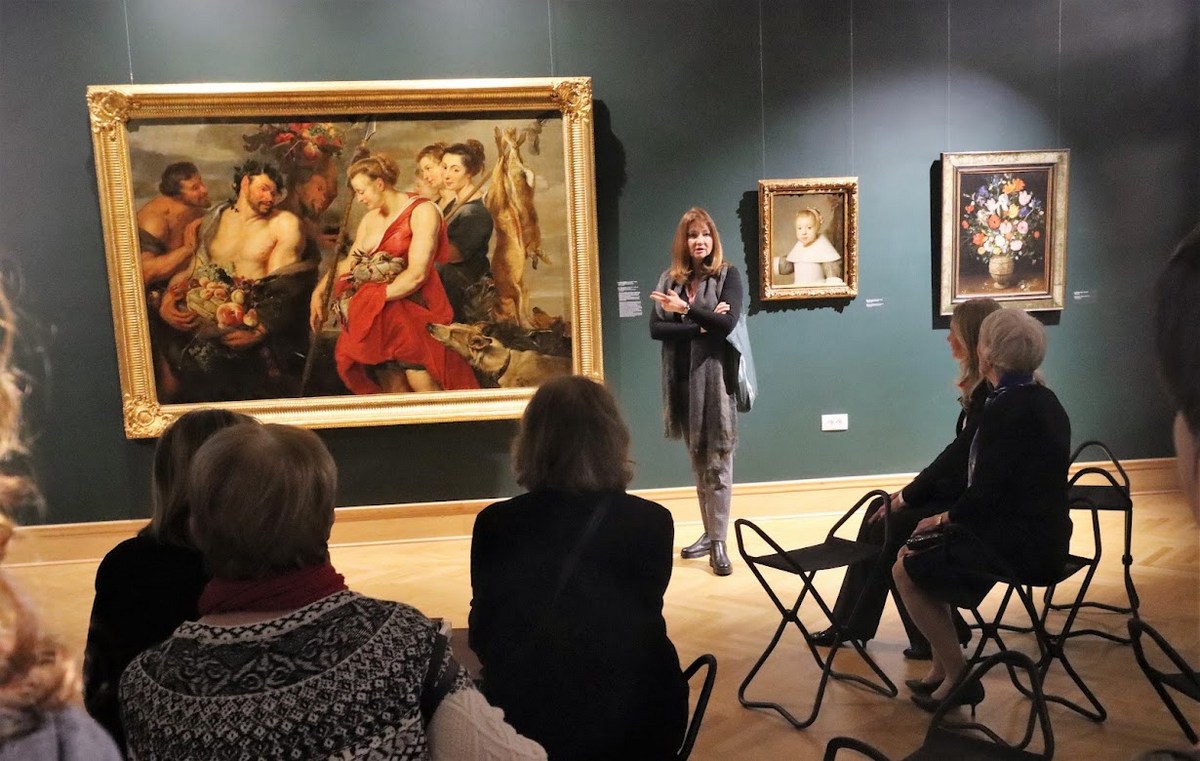Like five centuries ago, the Caravan from Flanders in Belgrade was an amalgam of typical creative activities of Flemish people: negotiation, trade, and art

That trade and culture go hand in hand were successfully illustrated by the cultural-business event organized by Vlamingen in de Wereld (VIW) – Flemings in the World – in Belgrade on November 29th. Flemings in the World is a Belgian non-profit organization based on a worldwide network of 80 representatives. With an estimated 300.000 Flemings living abroad, VIW aims to be the bridge between the emigrated Flemish community and their neighbors.
If the Flemish community in Serbia is not a large one, it is very diversified indeed. The business community is largely represented by the Belgian Serbian Business Association (BSBA), but what about other Flemings? In order to create an all-inclusive momentum, I decided to approach two pillars of my Flemish culture: its language and its art. Dutch, Netherlandic of Flemish is taught at the Philological Faculty of Belgrade University. It was not difficult to arouse an enthusiastic response from Professor dr. Jelica Novaković-Lopušina, founder of the Department for the Dutch language, nor from dr. Bojana Budimir, assistant professor. As for culture, I discovered the amazing collection of Flemish Masters at the National Museum of Serbia (NMS). Mrs. Jelena Dergenc, council and curator of the Museum and specialist in Flemish and Dutch Masters of the XVI and XVII centuries, agreed to support my eclectic initiative.
Inspired by a caravan that originated from Flanders to Constantinople 490 years ago, with a diverse group of diplomats, artists, and traders, my present-day Caravan from Flanders would start at the atrium of the NMS. Businessmen, translators and writers, editors and artists, professors and students answered my invitation. From Professor Novaković, we would learn about the historical bonds between Serbia and Flanders during Renaissance times. However, it was in the 19th century that entrepreneurs from the newly created Belgian state showed substantial interest in Serbia, which had freshly gained independence from the Ottoman empire. Cultural exchanges went in both directions, hence Miloš Crnjanski’s statement, which characterizes Flemings as “those who how to live and how to enjoy life, food, drink and sleeps…they show a welcoming hospitality, they pay without robbing, but more than anything else, they enjoy laughter”. The hedonistic character of Flanders is confirmed by dr. Budimir’s survey was conducted amongst Serbian students after their four-year course. Although admitting not knowing much about Flanders initially, they prefer Flemish authors to Dutch ones since they are “luxurious, exuberant and sensual.”
If the Flemish community in Serbia is not a large one, it is very diversified indeed
Mrs. Marijana Milošević-Tufegdžić and dr. Hugo van Veghel, both featured in this issue, would enlighten the audience as to the macro- and micro-economic aspects of Serbian-Flemish trade relations. Of the total Belgian imports and exports to Serbia, about 67% are attributed to the Flemish region (NBB statistics), hence the spotlight on the Flemish trade agency Flanders Investment and Trade. Dr. van Veghel also shared with us recent finesses referring to the evolution of the Dutch language, with gender inclusiveness. In the Great Dictionary of the Dutch language (Van Dale), words can be either masculine (m), feminine (v), or gender neutral (x). The editors explain that this is “a consequence of the changing conception of our society, by which the language changes as well.”
The last speaker and guide to the Caravan from Flanders would be Mrs. Dergenc, curator of the National Museum. It is noteworthy that this prestigious house hosts one of the largest collections of European art in the region. If at the end of the 19th century, the NMS acquired its first major work of Flemish art, it would be through diplomatic donations between the two World Wars that the collection would grow to its remarkable 200-piece collection of Flemish and Dutch Old Masters. In the Grand Gallery, Mrs. Dergenc would illustrate three of its finest acquisitions: “Diana presenting the catch to Pan” (1615) by Rubens, a floral tableau by Jan Breughel the Elder, and an oil on canvas by an anonymous Flemish artist depicting a young girl. Mrs. Dergenc illustrated the “manifactura” or industries of the School of Antwerp. Rubens, both painter, diplomat, and entrepreneur, often employed Snijders to paint animals, fruit, and still life in his own paintings. Moving to the Breughel floral arrangement, the painting should be read as depicting Christic symbolism. Probably the most moving painting would be the Young Child by a Flemish author unknown. It is hard to render in a few words the eagerness with which Mrs. Dergenc captured her audience. Suffice it to say that her presentation incited all participants to return to the Museum.
As with all Caravan Sarai, the final stop is often a watering hole. It was not water but a wine that quenched our thirst. Like five centuries ago, the Caravan from Flanders in Belgrade was an amalgam of typical creative activities of Flemish people: negotiation, trade, and art. The Flemish-Serbian bond continues: Mrs. Dergenc will be traveling to the Royal Fine Arts Museum of Antwerp, Flemish students are invited to visit Belgian investments, the NMS will launch the translation by Professor Novakovic of Het Schilder Boeck (Karel van Mander 1604), editors will continue to publish Serbian translations of Flemish literature. Our travels continue.
Author :
Gilberte Delva-Petrovic is a retired Belgian Trade Commissioner and represents Vlamingen in de Wereld-Flamanci u svetu- in Serbia. A special thanks to the sponsors: ELICIO (renewable energies), TARA IC (International Consulting), ITCCI (Center for Knowledge and Technology), and the BSBA.